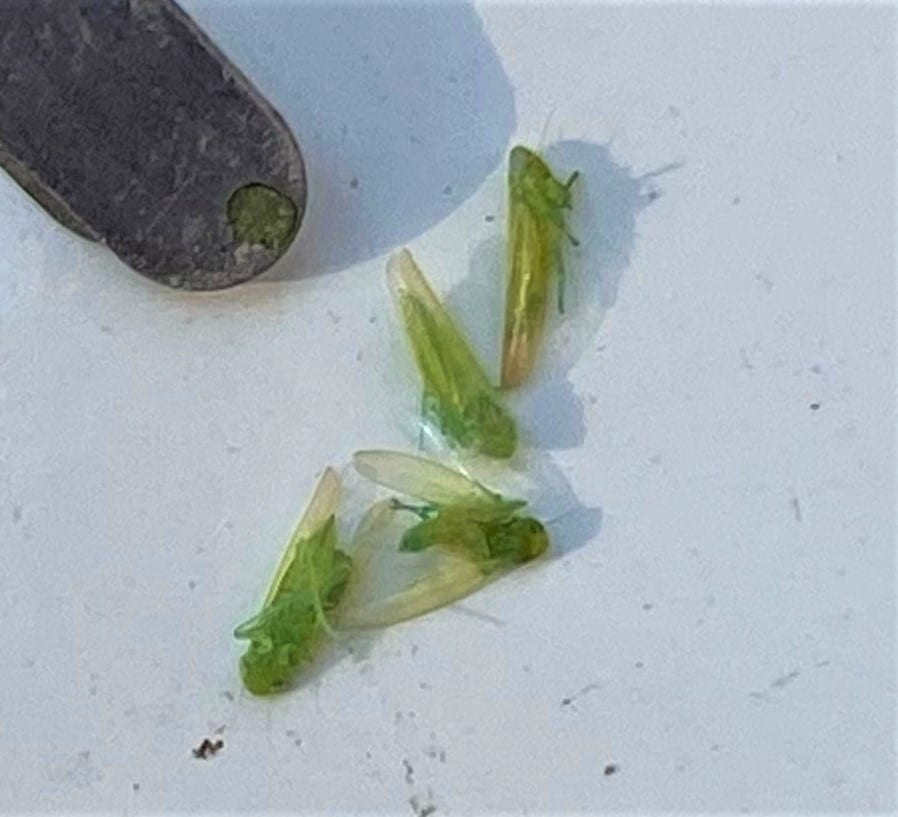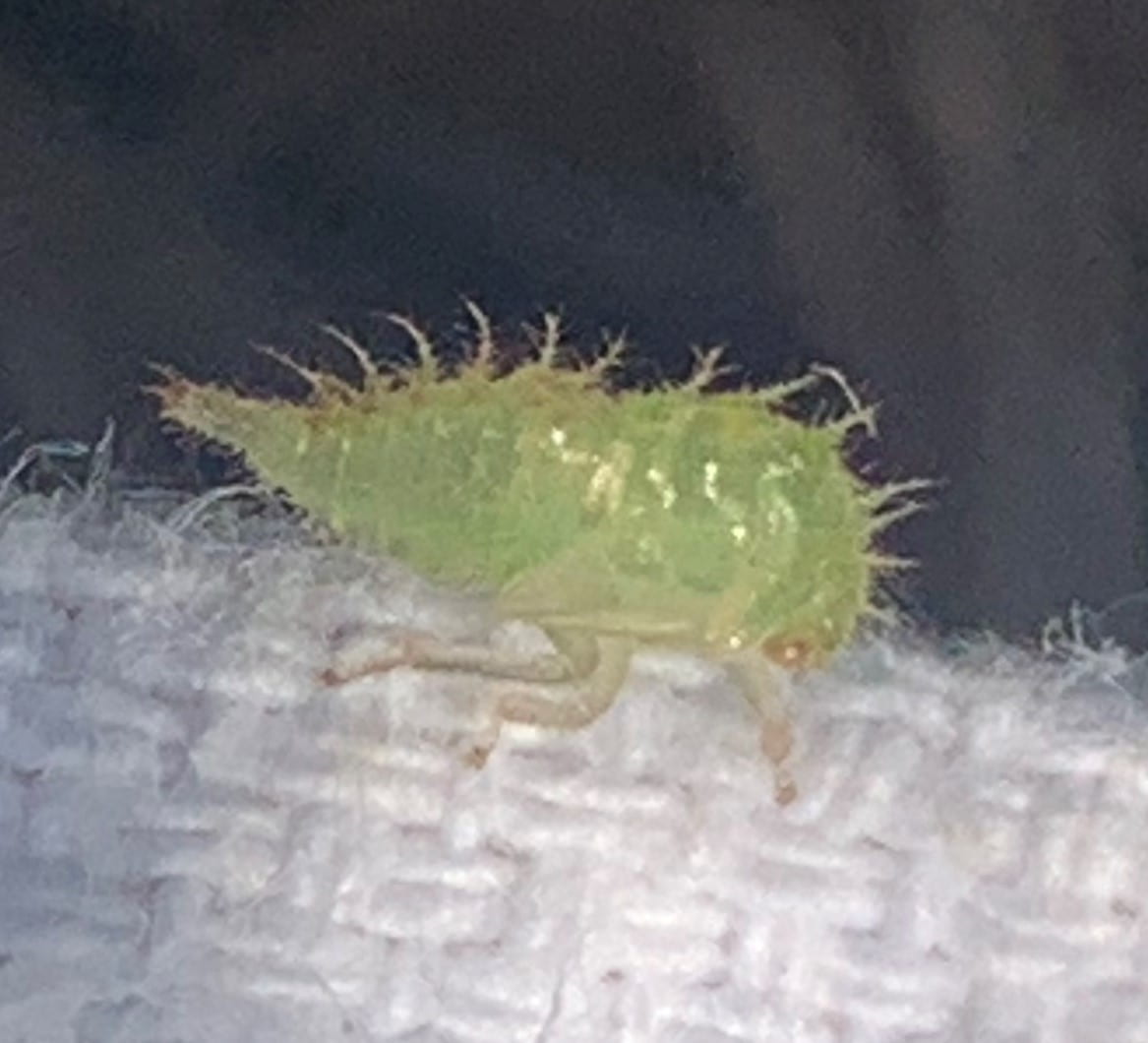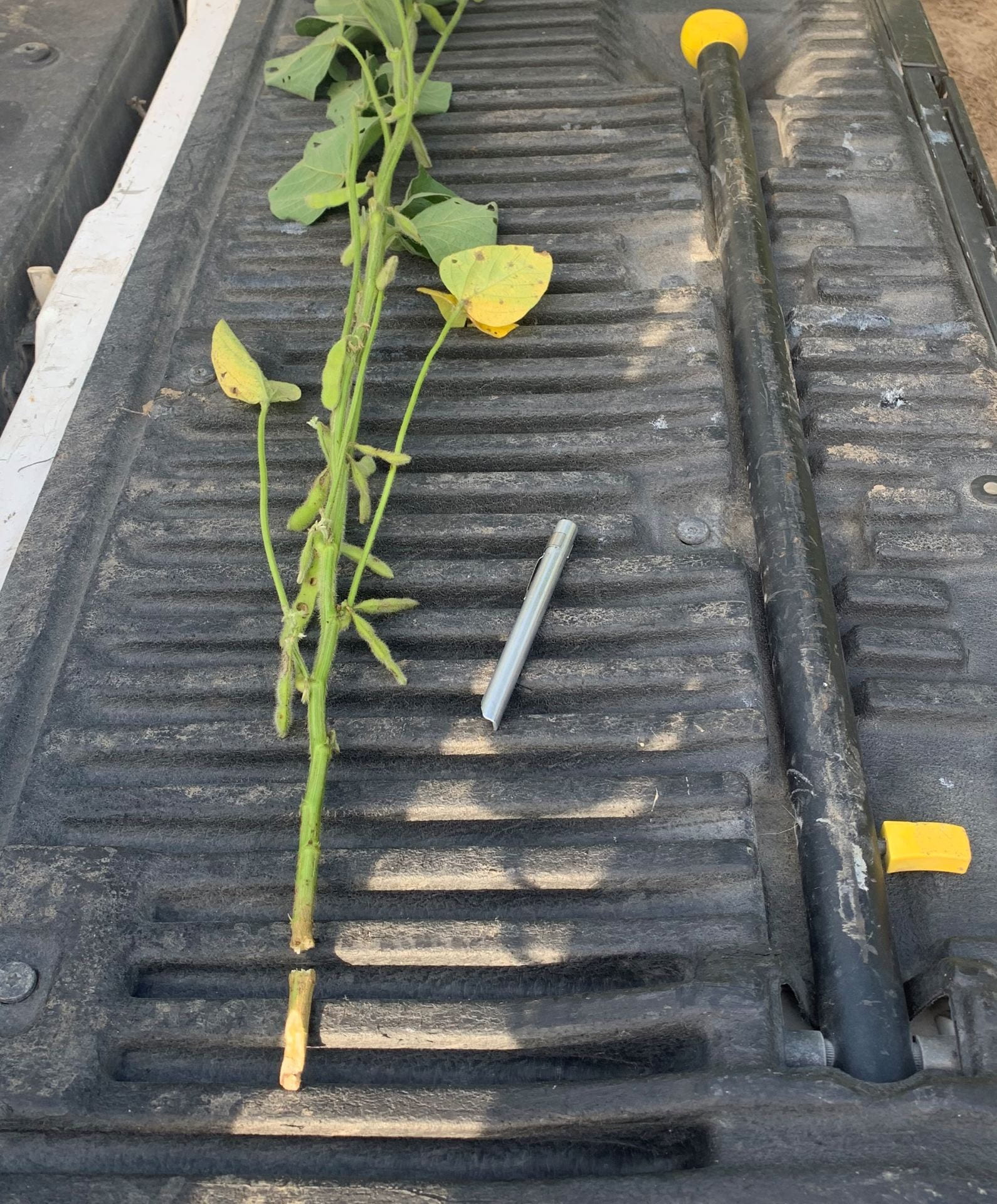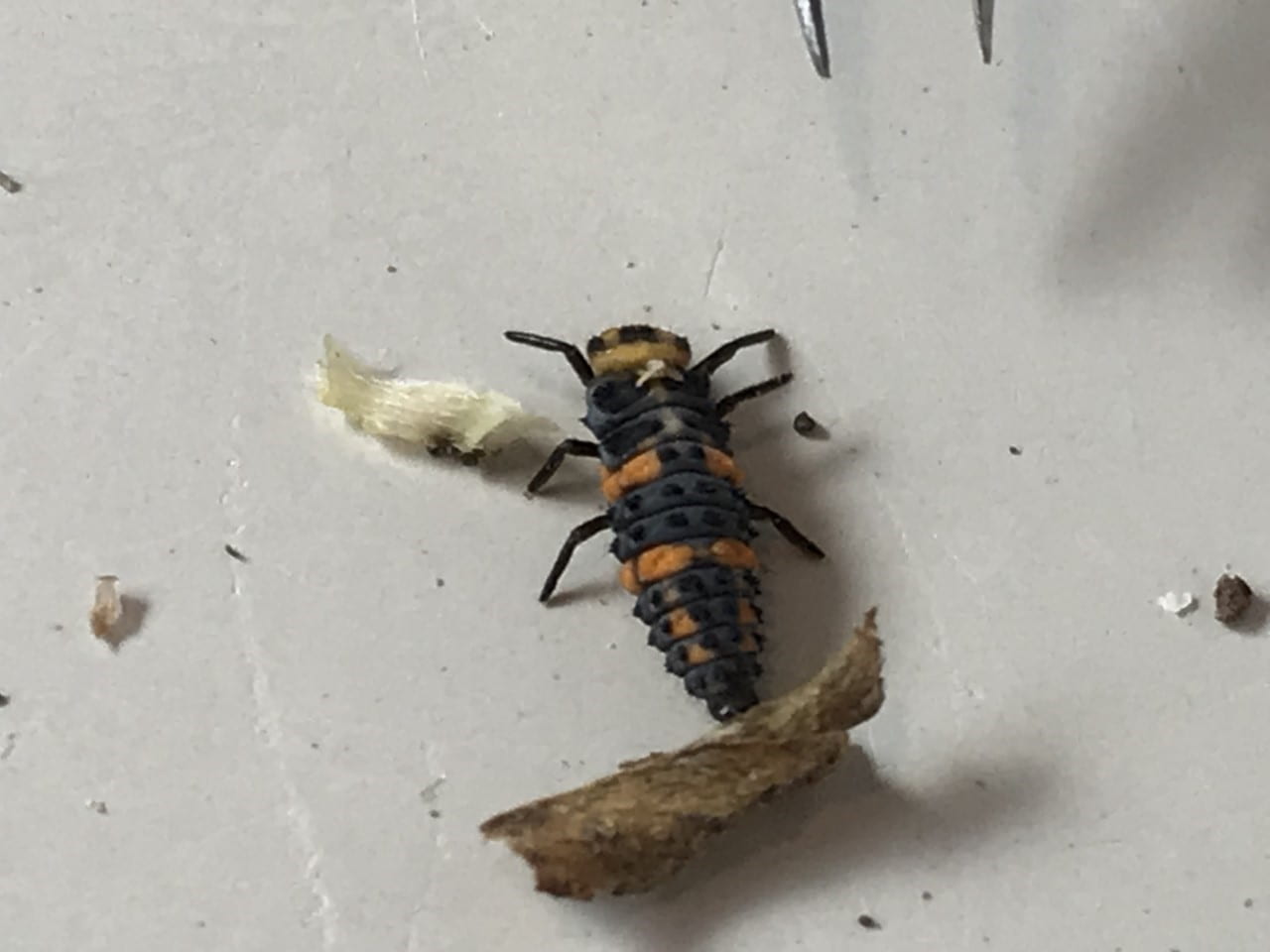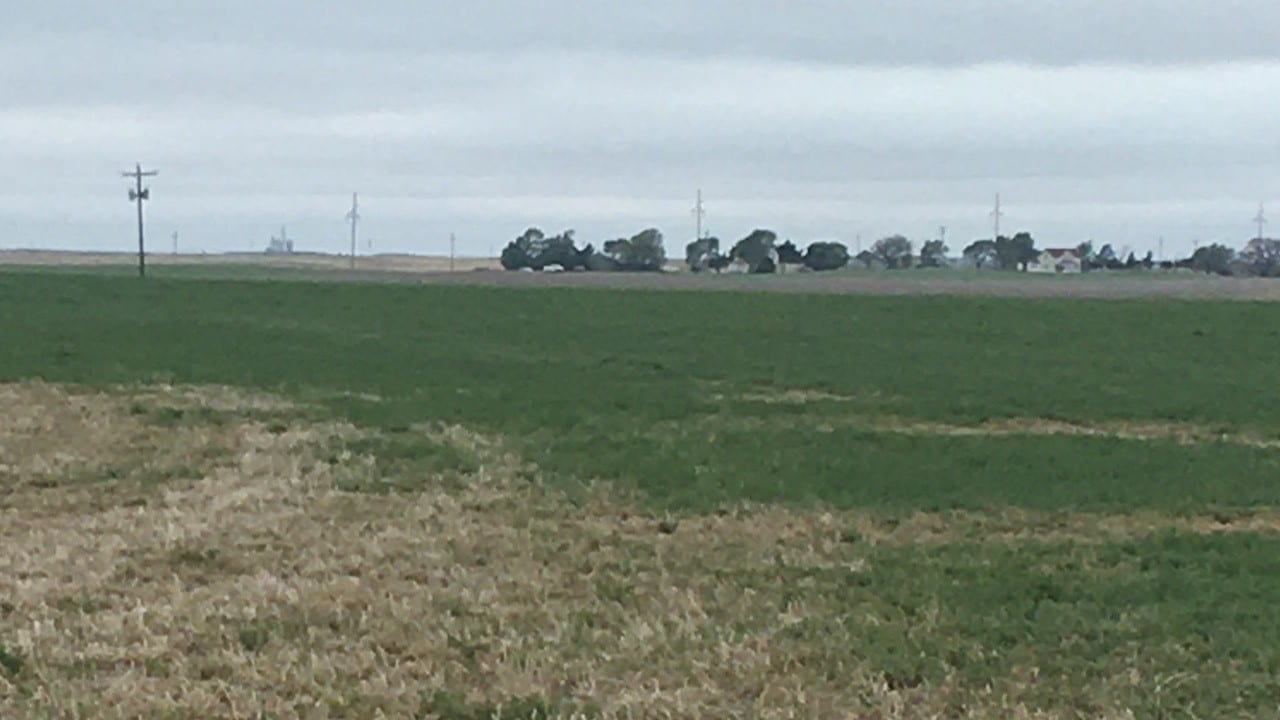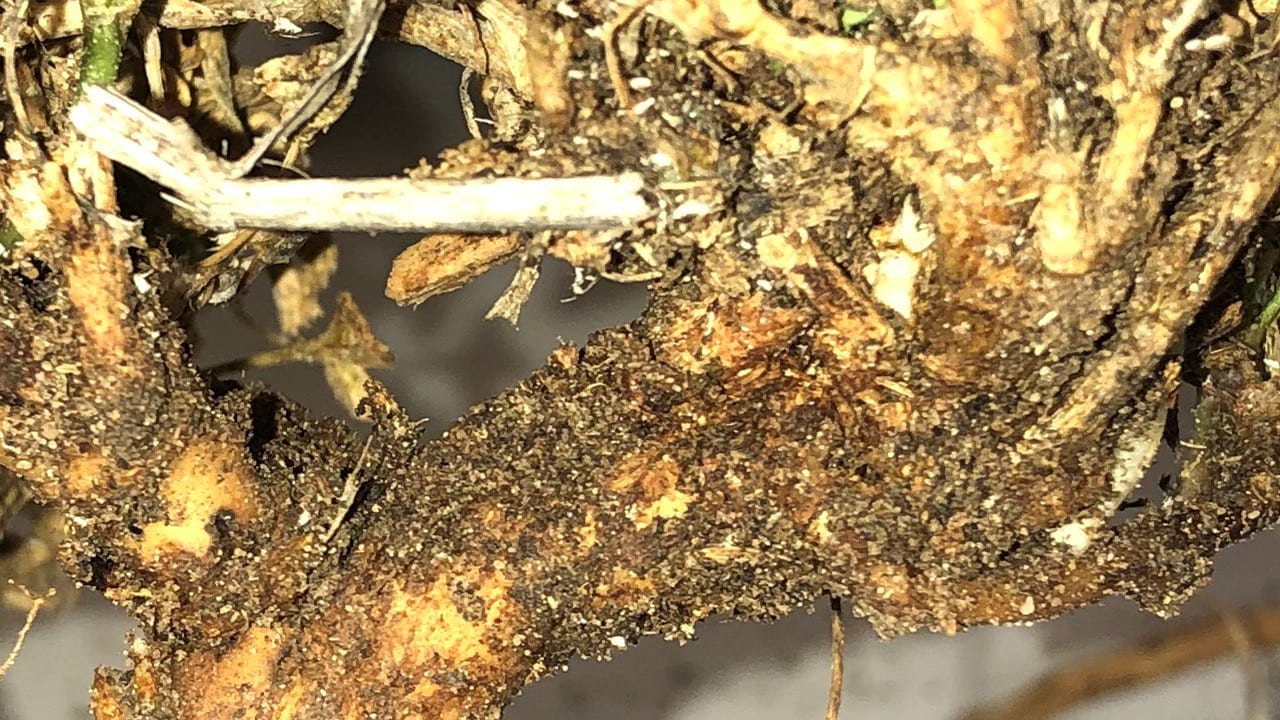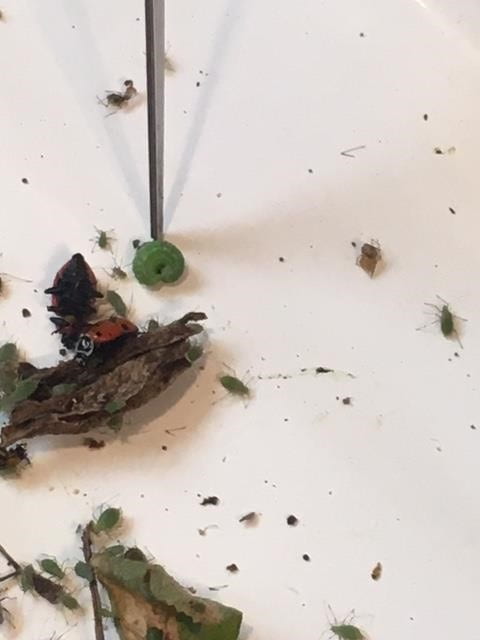–by Dr. Jeff Whitworth
None of the fields sampled over the past 10 days had been treated with an insecticide. Thus, pea aphids are really prevalent and increasing in population density. However, much like alfalfa weevils, none of the fields monitored had infestation levels anywhere close to a treatment threshold. These pea aphid populations are often utilized by beneficials (fig.2 of pea aphids and parasitized pea aphids, called “mummies”) early in the season to increase their populations, which often help against other pests in other crops.ie. greenbugs, corn leaf aphids, soybean aphids, etc. Again, monitoring pea aphids should also continue until swathing.
Alfalfa weevils and pea aphids are considered cool season pests and primarily affect alfalfa up to the 1st cutting. Most alfalfa weevil larvae detected (fig. 1) were late 1st/early 2nd instars and, thus will probably finish feeding in about 2 weeks at the temperatures predicted for that period of time (60-70’s for daytime temp’s). Thus, sampling for both alfalfa weevil larvae and pea aphids should continue until at least the 1st cutting.
Figure 2 Pea aphids and parasitized pea aphids (Cody Wyckoff)





